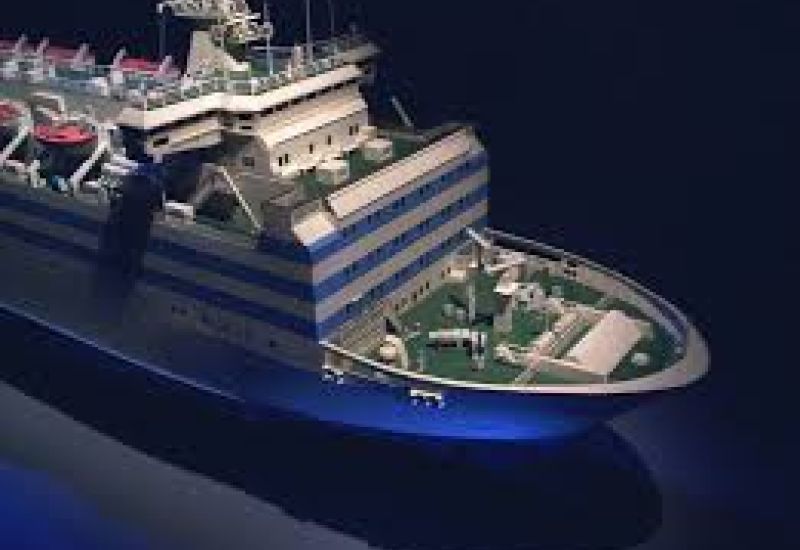MS ESTONIA
28 September 1994 – Baltic Sea
In order to highlight some of the specific problems encountered by SAR agencies when faced with the prospect of Multi Person Rescue emergencies at sea, it is worth examining the case of the MS Estonia, which sank in the Baltic Sea on 28 September 1994, with the loss of 852 lives.
The MS Estonia was Roll On Roll off passenger and vehicle cruise ferry which left Tallinn for Stockholm on evening of 27 September 1994 with 989 passengers and crew on board. It suffered a catastrophic failure of the bow doors at approximately 1am and had sunk to the bottom of the Baltic Sea by approximately 2am on 28 September 1994. It is estimated that approximately 250 people had initially escaped from the vessel before it sank, but around a third of these had died from hypothermia or drowning BEFORE the first rescue vessels and SAR helicopters arrived on scene around 1 hour later.
The surface sea temperature at the time of the incident was 10.5º Celsius. Of the total 989 people on board, only 137 survived. Of those survivors, only 7 were over the age of 55 and none were below the age of 12. Of the 106 crew members on board, 43 (41%) survived. Conversely, of the 803 passengers on board, only 94 (12%) survived. Of all the women on board, only 3% survived. These statistics raise some interesting questions: Why were crew members more than 3 times more likely to survive than passengers – Was it because they had undergone more emergency training? Furthermore, it is apparent that if you were a relatively young, adult male passenger, your chance of survival in the water was significantly higher than for women, or for younger or older passengers. It would seem apparent that once exposed to the cold water, it really was a case of survival of the fittest.
One of the capability gaps faced by many SAR agencies is in emergencies when a vessel is in distress at the extremes (or beyond) of current SAR helicopter range. It’s interesting therefore to note, that the MS Estonia incident occurred at a position well within SAR helicopter range. In fact, the Estonia sank around 45 miles from the coast line at a position that was roughly equidistant from Stockholm, Helsinki and Tallinn – 3 of the largest cities in the Scandinavian region. The Baltic Sea is also on the busiest shipping lanes in the world. It is also relevant to note that the sea temperature at the time of the incident was a relatively mild 10.5º Celsius. Even in these conditions, it is estimated that 1/3 of all those that escaped the sinking ship, died of hypothermia before rescue vessels and SAR helicopters arrived on scene around 1 hour after the Estonia sank.
Compare this to the Surface Sea Temperatures found around the higher latitudes in Spring, where sea temperature range from zero to around 6º Celsius. At those temperatures, humans with no thermal protection will typically die from cold injuries within 15 – 60 minutes. These facts remind us that even when people are able to escape from a sinking vessel, the threat to their survival is far from over. In the case where sea temperatures are 10º or cooler, it is highly likely that people who enter the water will not survive for more than an hour before succumbing to hypothermia and death. It is imperative therefore, to provide equipment to ensure that people only ever enter the water if the vessel is in imminent danger of sinking.
If equipment was available that provided the means for SAR helicopters to transfer large numbers of personnel from a stricken vessel to a place of relative safety, it is clear that this would offer a safer option than those same people having to enter the water – even if they were to do so within the confines of an inflatable life raft. After all, without water proof thermal protection, people in life rafts will still be subject to the effects of cold water. But what if, as in the case of the MS Estonia, people have to enter the water because the vessel is sinking? Clearly, in this scenario, entering the water is the only option available. The priority in this case, is to get people out of the water as quickly as possible.
There were a total of 19 SAR Helicopters involved in the rescue mission after the MS Estonia sank. Those 19 SAR Helicopters were able to lift a total of 104 people from the sea – an average of 5.5 people per helicopter. Of those 19 helicopters, one aircraft – a Finnish SAR Super Puma lifted an astonishing 44 people! This means that the remaining 18 SAR helicopters lifted an average of 3.3 people per helicopter throughout the whole rescue mission. Given that cruise ships and large ferries in operation today can often carry several thousand crew and passengers, it is clearly inadequate for each SAR helicopter to be limited to rescuing an average of only 3 or 4 people simply because they lack the capacity or equipment to rescue more.
If Multi Person Helicopter Rescue equipment was pre-positioned on vessels that carry hundreds or even thousands of crew and passengers, would it not mitigate these risks to some degree and offer SAR agencies significantly greater capability in the event of Multi Person Rescue emergencies?
